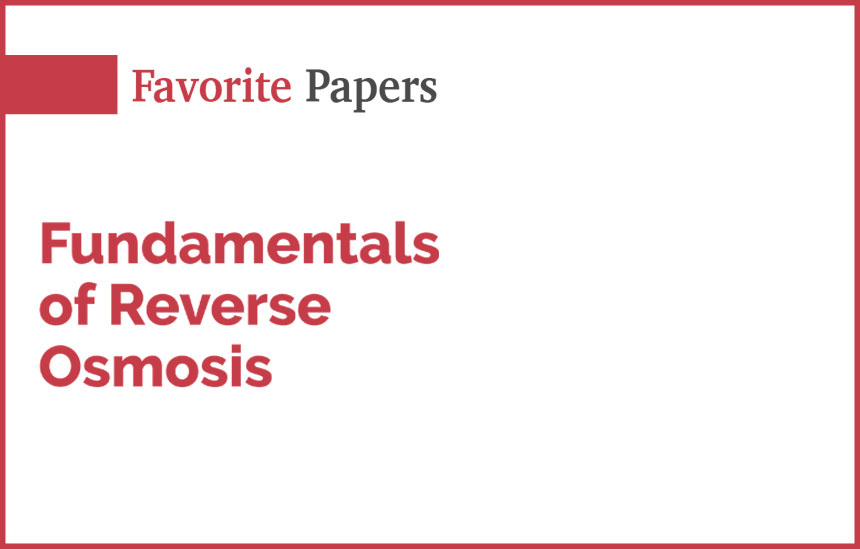Published on IDRA Global Connections Winter 2021 Issue
The Invention of the modern RO membrane by Loeb, S., and Surirajan, S. 1964. US Patent 3,133,132. And the thermodynamics of the process by Spiegler KS, Kedem O. Thermodynamics of hyperfiltration (reverse osmosis): criteria for efficient membranes. Desalination. 1966;1:311–326.
Nominated by: Raphael, PhD, PE Department of Chemical Engineering Technion, Israel Institute of Technology
cesemiat@technion.ac.ii
My first introduction to desalination was during my PhD research at the Technion. I worked on multi effect distillation at that time and found
the field fascinating. Upon returning from industry to the Technion I decided to continue with this exciting field. Two main techniques competed
on the small desalination market at that time. This was a healthy competition that caused cost reduction and hence increased the desalination market. I was impressed mainly by two articles. The first is the patent of Loeb and Surirajan that was based on the reduction of mass transfer resistance to water passage through a tinner membrane and in fact invented the modern RO membranes. Sydney Loeb immigrated to Israel
and built his second desalination plant in the center on the Negev Desert, supplying desalinated brackish water. Professors Spiegler and
Kedem, provided us with the first explanation and theory on the thermodynamics of water passage through the membrane. At that time, an
important question was if the polymeric thin layers will be able to compete with the strong, massive structure of the evaporation techniques.
Based on the opportunity of the RO technique, Professor Hasson and I decided to promote the Desalination subject in our country, to help the industry involved and convince the decision-makers. We established the Israel Desalination Society with our partners at the academy and industry. We had the honor to have Professor Kedem and Dr. Loeb on our board and as keynote lecturers and award whiners in our meetings.
This effort was a big success. Currently, about 80% of the urban water supplied by desalination. With all the experience gained, water cost
went down significantly.
As researchers we try to continue and improve the processes. Especially the issues of fouling prevention, improved wastewater treatment, the energy consumed and the environmental issues of desalination and even develop a simple technique for removing calcium from seawater what
improve the ability of cost reduction in evaporation processes.

